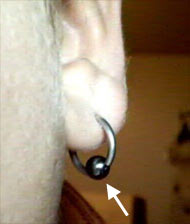BME Encyclopedia:Sandbox: Difference between revisions
Jump to navigation
Jump to search
(Created page with "Hello") |
No edit summary |
||
| Line 1: | Line 1: | ||
Hello | Hello | ||
<html><div class="mw-content-ltr" dir="ltr" id="mw-content-text" lang="en"><div class="floatright"><a class="image" href="/index.php?title=File:Hematite.jpg"><img alt="Hematite.jpg" height="224" src="/images/a/ae/Hematite.jpg" width="190"/></a></div> | |||
<p><b>Iron oxide commonly used for beads</b> | |||
</p><p>Due to their pleasing appearance and low cost, hematite beads are commonly used on <a href="/index.php?title=Captive_Bead_Ring" title="Captive Bead Ring">captive bead rings</a>. Hematite is iron oxide - essentially a relatively inert silver gray/black form of <i>rust</i>. While it's perfectly safe to wear hematite as a bead, it is not recommended for subcutaneous use. | |||
</p></div></html> | |||
Latest revision as of 01:14, 21 May 2023
Hello
Iron oxide commonly used for beads
Due to their pleasing appearance and low cost, hematite beads are commonly used on captive bead rings. Hematite is iron oxide - essentially a relatively inert silver gray/black form of rust. While it's perfectly safe to wear hematite as a bead, it is not recommended for subcutaneous use.
